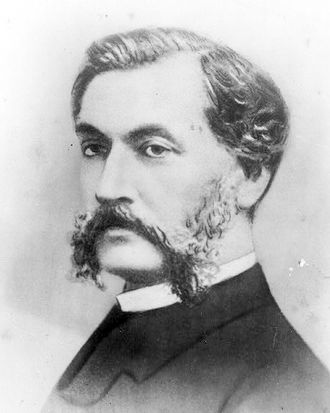Louis Le Prince
Louis Aimé Augustin Le Prince (French: [lwi lə pʁɛ̃s]; 28 August 1841 – vanished 16 September 1890) was a French artist and inventor. He filmed what may have been the first moving picture sequences to use a single lens camera and a strip of (paper) film.[1]
Louis Le Prince | |
|---|---|
 | |
| Born | Louis Aimé Augustin Le Prince 28 August 1841 Metz, France |
| Disappeared | 16 September 1890 (aged 49) Dijon, France |
| Status | Vanished |
| Occupation | Artist, Art teacher, inventor, |
| Spouse(s) | Elizabeth Le Prince-Whitley
(m. 1869) |
Le Prince was never able to perform a planned public demonstration in the United States because he mysteriously vanished from a train on 16 September 1890.[1] His body and luggage were never found, but, over a century later, a police archive was found that had a photograph of a drowned man who could have been him.
In the years after his death, his son Adolphe was in a court. He was representing Louis, in a battle against Thomas Edison to name the true inventor of motion pictures.[2] Edison won the case and a few months later, Adolphe was killed in a hunting accident.
Louis Le Prince Media
Traffic Crossing Leeds Bridge, the second film ever made; produced by Louis Le Prince in 1888 after Roundhay Garden Scene.ogg.
Louis Le Prince's Accordion Player from 1888. This is an amateur remastering from the National Science Museum's 1930 copy: 19 frames at 2 frames per second. Original image upsampled, split and cropped using IrfanView; converted by VirtualDub to uncompressed AVI; converted to OGV at maximum videobitrate by ffmpeg2theora-0.25
Animation of Roundhay frames, 7fps.
References
- ↑ 1.0 1.1 "BBC Education – Local Heroes Le Prince Biography". Archived from the original on November 28, 1999. Retrieved 2022-03-12., BBC, archived on 1999-11-28
- ↑ "Pioneers of Early Cinema: Louis Aimé Augustin Le Prince (1841–1890?)". National Media Museum. June 2011. Archived from the original (PDF) on 2013-10-16. Retrieved 2014-08-02.
